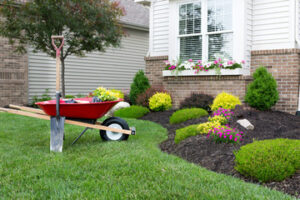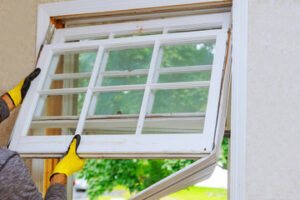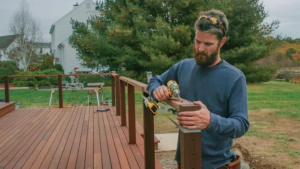Pest Control Simi Valley CA is the action or process of managing pests and their damage. IPM is an ecosystem-based approach that minimizes the use of pesticides by practicing prevention and using targeted, selective control methods when necessary.
Scouting and monitoring are important for determining when pest control is needed. Knowing the pest’s life cycle helps direct control efforts: spray too soon, and you might miss the pest; spray too late, and you might cause further damage.

Pest control methods aim to cause as little harm as possible to non-target organisms, the environment, and people. This is accomplished by selecting a pesticide specifically designed for the targeted organism, following label instructions carefully, and using the minimum amount necessary to achieve the desired results.
Some pesticides can be harmful if they come into contact with human skin or are inhaled. They can also pose a hazard if they contaminate food or water supplies or if children or pets accidentally consume them. Professional technicians are trained in safely handling, storing, and disposing of pesticides and follow strict guidelines for their use. They may recommend temporarily relocating animals during pest treatment or taking other precautions to prevent accidental exposure.
Rodents, birds, and insects that damage food crops or other property are considered pests. They may be continuous, such as rodents or cockroaches, or sporadic and migratory, such as bees or caterpillars. They can be destructive, such as ants and termites, or just nuisances that disturb people’s lives or spoil their enjoyment of the outdoors.
In a hospital, rodents and insects can pose real health threats to patients and staff, damage facilities and create a bad image for the facility. Many hospitals have adopted integrated pest management (IPM), a process of monitoring pests and their damage, then using a variety of techniques to reduce or eliminate them without pesticides if possible.
Workers who handle pesticides are exposed to health and safety hazards, including respiratory problems, allergic reactions, skin and eye irritation and chemical burns. They also face ergonomic risks from prolonged or repetitive use of equipment. To help minimize these hazards, workers should wear proper personal protective equipment when applying pesticides. They should read and follow product labels, never apply more pesticide than recommended, and store products in a secure location where they are inaccessible to unauthorized persons.
In addition, workers should keep pesticides separated from other chemicals and materials, such as food, water, animal feed and medical supplies, to avoid contamination. They should also store them in a cool, dry place where they will not be exposed to extreme temperatures, which can degrade or distort the chemicals.
Environment
Pest control involves managing the number of pests in an area to an acceptable level. This is done through prevention, suppression, and eradication. Prevention is the best way to protect people and property and minimize environmental harm. This includes keeping weeds, rodents and other pests out of gardens, lawns and homesteads by using proper planting and maintenance practices. It also includes using mulches, steam sterilization of soil, and barriers to keep pests out.
Suppression is the controlled use of chemicals to reduce pest populations to an acceptable level. This may include traps, netting and baits. It may also include changing cultural practices, such as mowing heights, irrigation and fertilization schedules, or harvesting techniques, to make it harder for pests to survive and reproduce.
In many cases, the natural environment provides effective pest control through diversity and other biological factors. Biodiversity, in particular, can help prevent and control pests by disrupting insect life cycles or competing with them for food or shelter. This can be achieved at the species, taxon, and ecosystem levels.
Some types of plants, wood, and animals are resistant to certain pests. Using these resistant varieties can help keep pest numbers below harmful levels and can decrease the need for chemical controls.
When pests invade homes, offices or other enclosed spaces, they can cause health and safety problems. They can spoil food or damage structures and equipment. They can also spread disease-causing microorganisms. Pests can also contaminate the environment by leaving droppings, excrement or feces behind, or by releasing pheromones that attract other pests.
In order to maintain good pest control, a person should follow all local, State and Federal regulations. In addition, they should use only approved substances and methods. They should always be careful when applying pesticides near sensitive areas, such as waterways or wildlife habitats. They should also avoid contaminating themselves, their clothing and equipment when working with pesticides. They should take special precautions when applying pesticides in food processing environments to prevent contamination of foods and materials. They should also ensure that the area is protected from accidental exposure by establishing buffer zones where necessary.
Property Damage
Pest control aims to prevent and reduce damage caused by pests. Pests can have a negative impact on our livelihood, health and environment, such as by transmitting disease, causing food contamination, staining and damaging property or making living conditions unpleasant. Pests can also have a detrimental economic impact on businesses such as those that produce and process foodstuffs, as well as on other areas where humans live and work, such as homes and gardens.
Prevention is the key to successful pest management. Preventing pests from getting into buildings or other structures is much more cost-effective than trying to get rid of them once they are inside. Pest control measures include removing sources of food, water, and shelter to make the environment less attractive to them. It is also important to repair any cracks and crevices that pests could use as entry points. It is advisable to store food in plastic or glass containers, to remove garbage regularly from the home, and to repair leaky plumbing.
Other methods that can be used to control pests include trapping, fencing, netting and spraying. Chemicals that destroy, repel, or alter the behavior of pests are called pesticides. They can be sprayed directly onto pests or into their habitats. They can be either synthetic or organic. Chemicals that kill pests are generally the fastest and most effective way to control them, but they can also harm the environment, people, pets, livestock and plants.
It is important to consider all options when deciding whether to use chemicals for pest control. The best approach is to evaluate the benefits and risks of each tactic or combination of tactics, choose a strategy that will cause the least harm, and follow local, State and Federal laws regarding pesticide application. It is also important to be aware of possible side effects from pesticides and to keep records of pesticide use. Always read the label of any pesticide before using it, and dispose of empty pesticide containers appropriately.
Monitoring is the process of checking a field, garden, landscape, building or forest for pests and assessing how many there are and what kind of damage they have done. The information gathered from monitoring can help determine if a pest is a problem, when to start controlling it and what management strategies are most appropriate. Monitoring can be done by scouting, trapping, and visual inspection, as well as by collecting data on environmental factors such as temperature and moisture levels.
Economical
Pest control is an important investment in your property. It prevents costly damages to your house or business and protects the value of your investment over time. Regular pest control also prevents health-related expenses from illnesses caused by pests. It also protects your reputation in the eyes of customers and prevents loss of revenue due to pest-related disruption of operations. In addition, it reduces legal liabilities from pest-related problems.
Economic thresholds are a key element of pest control decision-making. They provide a way to evaluate the destructive status and potential of a pest population. They help determine whether or not to take action and can reduce the risk of taking unnecessary actions that might lead to unintended consequences such as crop destruction.
Thresholds are typically determined through a combination of scouting and monitoring. For example, a few wasps flying around doesn’t warrant any action, but the appearance of numerous wasps and their continuous circling of a plant might indicate a need for treatment. The basic goal of pest management is to reduce the pest population to a level below that which causes unacceptable damage. Suppression and prevention are often mutually beneficial goals; suppressing a current pest population while keeping it from building up to outbreak levels in the future.
Sophisticated spatially explicit models have been developed to estimate the return from different pest control strategies on a field and landscape basis. These models incorporate models of population dynamics, management impact (timing and number of sprays in the case of pesticide) and pest dispersal if the control is in non-crop vegetation.
Integrated pest management is a holistic approach to pest control that considers all aspects of the production system. It includes assessing the activities of neighboring properties and factory environments as well as the design and maintenance of the factory site and buildings to minimize pest harborage and entry. It includes monitoring of soil and water quality as well as minimizing disturbance to wildlife and plants. It also includes revegetating with and conserving the local ecosystem. This enables you to use pest control methods in a sustainable manner that is balanced with the needs of local species.








